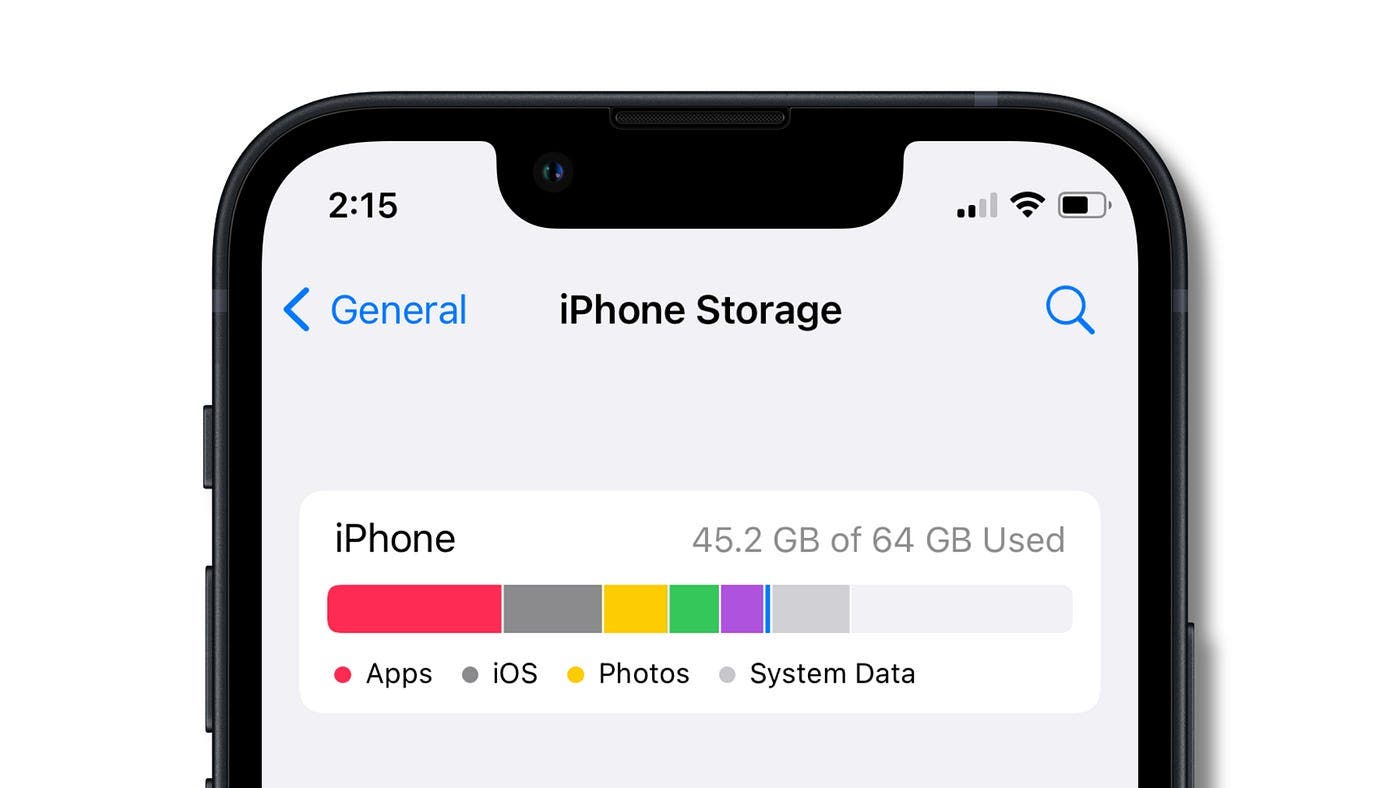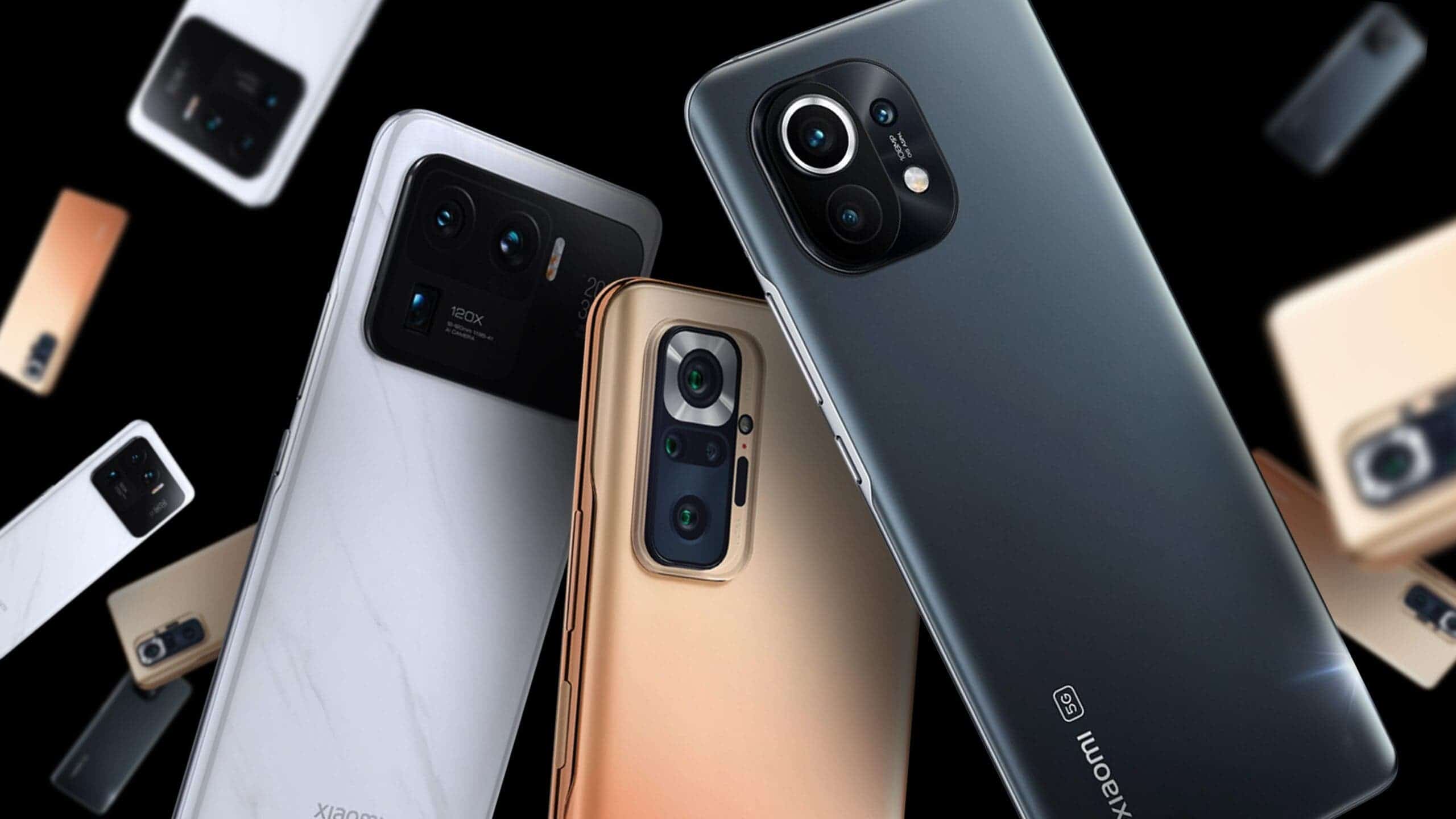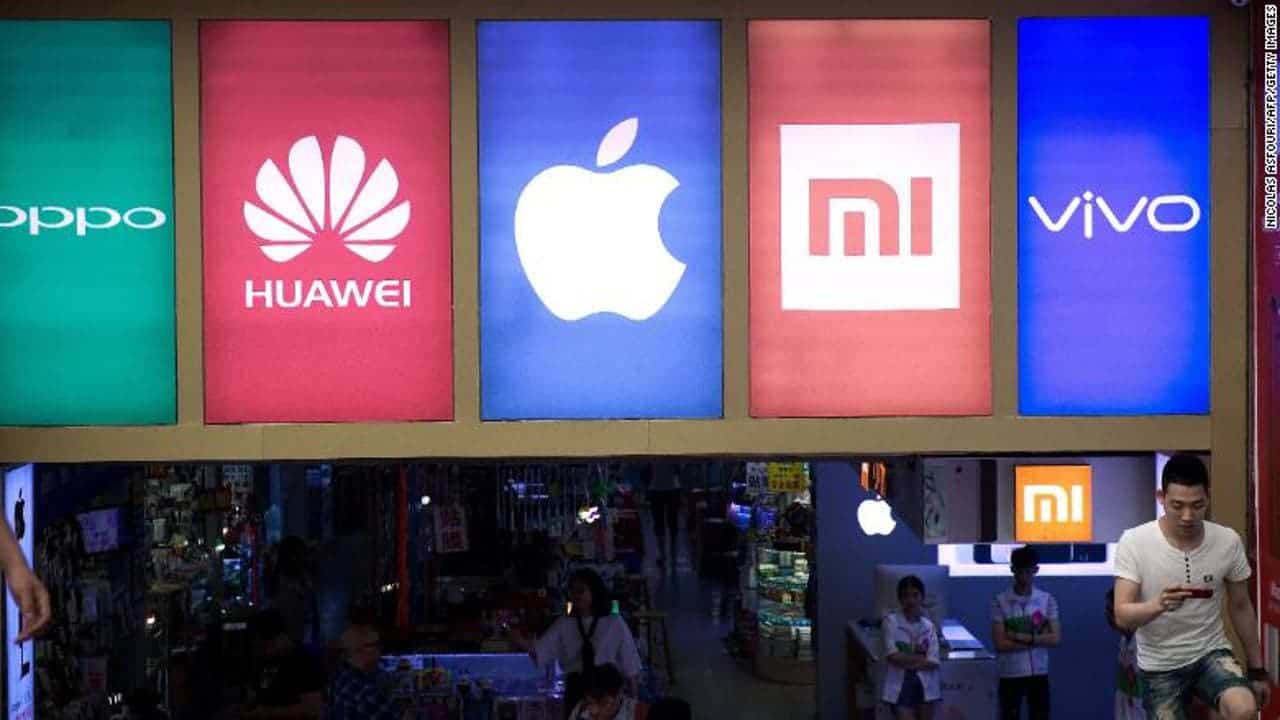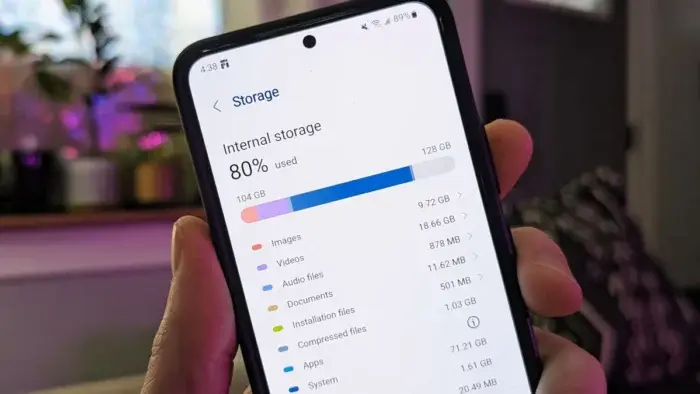In the rapidly evolving world of smartphones, storage capacity plays a pivotal role in enhancing user experiences. Gone are the days when 64 GB of storage was considered sufficient. Today, the baseline for most smartphones stands at 128 GB. However, while opting for the 128 GB version may seem like a budget-friendly choice, it could result in premature obsolescence of the device. In this article, we delve into the importance of choosing smartphones with ample storage, particularly focusing on the Android ecosystem, while also considering the evolution of applications, the rise of high-quality multimedia, and individual usage patterns. With a clear emphasis on the practical implications, we explore why a minimum of 256 GB of storage is becoming the sensible choice for modern smartphone users.
The Crucial Role of Ample Storage in Modern Smartphones: A Comprehensive Analysis

The Shift in Smartphone Storage Landscape
Not too long ago, a majority of smartphones were equipped with 64 GB of storage. Although a few modest models still carry this configuration, the industry has witnessed a significant shift towards a minimum base storage of 128 GB. Despite the increase, it is essential to question whether the 128 GB option is the most practical choice for users in the long run.
The Pitfalls of Opting for the 128 GB Version
Choosing the 128 GB version of a smartphone may seem appealing at first due to the cost-saving aspect. However, users often fail to realize that this decision might hasten the device’s expiration date. A smartphone packed with applications, photos, videos, and other data can quickly deplete the available space. The constant struggle to free up space by deleting files, uninstalling apps, and resorting to cloud storage can take a toll on user satisfaction.
The iOS Dilemma
For Apple enthusiasts, the dilemma is amplified by two factors: iOS as their preferred operating system and budget constraints. Apple’s devices, lacking SD card slots for expandable storage, offer limited options to increase storage capacity. Cupertino’s pricing for higher storage configurations can be prohibitive, leading many to opt for the 128 GB version. Consequently, they may experience recurrent storage issues and a suboptimal user experience.

The Android Advantage
In the Android ecosystem, the situation is not entirely different from iOS. SD card slots are becoming increasingly scarce, limiting the options for expandable storage. As a result, users need to be meticulous in determining their storage needs, as over-reliance on cloud solutions may lead to accumulating costs over time.
Price Fluctuations and Cost-Effectiveness
Despite the similarity between iOS and Android in terms of expandable storage, Android devices have an advantage in terms of price fluctuations and cost-effectiveness. When comparing the recommended retail prices of Android and iOS devices, the former typically offer better value for money with higher storage configurations. Additionally, Android users often benefit from more frequent discounts, making it an economically viable choice to opt for higher storage options.
Understanding Available Storage
It is crucial to recognize that the advertised storage capacities of smartphones do not always translate to the actual space available for users. Pre-installed software, including bloatware, occupies a significant portion of the storage. Hence, for those planning to retain their devices for an extended period, choosing higher storage configurations becomes a wise investment.

Individual Usage Patterns
The ideal storage capacity varies depending on individual usage patterns. While some users primarily utilize their smartphones for basic tasks such as calls and messaging, others, like content creators and professionals, rely heavily on their devices for various activities, including social media, email management, photography, video editing, and work-related tasks. A thorough examination of one’s usage habits is crucial in determining the appropriate storage capacity.
Rise in App Size and Multimedia Content
The general trend in application development indicates an increase in app sizes. As apps integrate more features and focus on visual aesthetics, their sizes naturally expand. For instance, popular apps like WhatsApp and YouTube have witnessed a substantial growth in size over the years. Consequently, users must exercise caution while installing such applications to avoid storage issues in the long term.
The Evolution of Smartphone Cameras
One of the significant factors contributing to increased storage consumption is the improvement in smartphone cameras. Modern high-end devices boast advanced optics and camera technology, enabling users to capture stunning photos and videos. However, these higher-quality multimedia files also demand more storage space, necessitating the need for adequate storage capacity.

Optimization vs. Storage Space
Developers are continuously working on optimization techniques to ensure apps use storage space efficiently. Technologies like HEVC/H.265 can significantly reduce video file sizes without compromising quality. However, compatibility issues with certain platforms may necessitate converting videos to more widely supported formats, resulting in increased storage usage.
Offline Content Downloads
Users who prefer offline content consumption, such as downloading episodes from streaming platforms like Netflix or HBO, must consider the substantial storage requirements. Downloaded content can quickly deplete available storage, making a higher capacity smartphone a practical choice for such individuals.
Verdict
In conclusion, the decision to choose a smartphone with ample storage capacity is crucial in ensuring a seamless and satisfying user experience. While 128 GB may suffice for some users, power users, content creators, and those planning to retain their devices for an extended period will benefit significantly from a minimum of 256 GB. By carefully assessing individual needs, considering the rise in app size and multimedia content, and examining usage patterns, users can make an informed choice that aligns with their requirements and usage preferences. A smartphone with sufficient storage capacity not only saves time and money in the long run but also allows users to make the most of their devices’ capabilities in the modern digital age.

Do not buy a smartphone that has this:
Smartphones are a ubiquitous part of our lives, but not all smartphones are created equal. Some smartphones have features that are not only unnecessary, but they can also be harmful to your privacy and security. Here are some of the things you should avoid when buying a smartphone:
- A locked bootloader. A locked bootloader prevents you from installing custom firmware or rooting your phone. This means that you will be stuck with the software that the manufacturer provides, which may not be the most secure or up-to-date.
- A privacy-invasive app pre-installed. Some smartphones come with apps that track your location, collect your data, or even show you ads. These apps can be a major privacy and security risk, so it’s important to check what apps are pre-installed before you buy a phone.
- A weak security system. Some smartphones have weak security systems that make them vulnerable to hacking and malware. Look for a phone that has a strong password manager, encryption, and other security features.
- A small battery. If you use your phone a lot, you’ll want a phone with a long-lasting battery. A small battery will leave you constantly tethered to a charger, which can be a major inconvenience.
- A low-quality display. If you watch a lot of videos or play games on your phone, you’ll want a phone with a high-quality display. A low-quality display will make your phone experience less enjoyable.
- A poor camera. If you take a lot of photos or videos with your phone, you’ll want a phone with a good camera. A poor camera will make your photos and videos look blurry and grainy.
In addition to these specific features, there are a few other things to keep in mind when buying a smartphone. First, consider your budget. Smartphones can range in price from a few hundred dollars to a few thousand dollars. It’s important to find a phone that fits your budget and your needs.
Second, think about what you’ll be using your phone for. If you’re only going to use it for basic tasks like calling, texting, and browsing the web, you don’t need a high-end phone. However, if you’re going to use your phone for more demanding tasks like gaming or video editing, you’ll need a more powerful phone.
Finally, don’t be afraid to shop around. There are a lot of different smartphones on the market, so it’s important to compare prices and features before you make a purchase. You may be able to find a great phone for a fraction of the price of a name-brand phone.
By following these tips, you can avoid buying a smartphone that has features that are unnecessary, harmful, or just plain annoying. With a little research, you can find the perfect smartphone for your needs and budget.
Here are some additional tips for buying a smartphone:
- Read reviews. Before you buy a smartphone, read reviews from other users. This will give you a good idea of the pros and cons of the phone.
- Consider the operating system. There are two main operating systems for smartphones: Android and iOS. Each has its own strengths and weaknesses, so decide which one is right for you.
- Check the warranty. Make sure the smartphone you buy has a good warranty. This will protect you in case the phone breaks or malfunctions.
- Buy from a reputable retailer. Avoid buying a smartphone from a third-party seller, as you may not be able to get a refund or warranty if something goes wrong.
By following these tips, you can be sure to buy a smartphone that you’ll be happy with.

Things to Consider When Buying a Smartphone
Smartphones have become an essential part of our lives. We use them for everything from staying connected with friends and family to browsing the web, checking email, and playing games. With so many different smartphones on the market, it can be tough to know which one is right for you.
Here are some of the most important things to consider when buying a smartphone:
Operating system
The first thing you need to decide is what operating system you want. There are two main options: Android and iOS. Android is the most popular operating system, and it’s used by a wide variety of manufacturers. iOS is the operating system used by Apple iPhones.
Both Android and iOS have their own strengths and weaknesses. Android is more customizable, while iOS is more user-friendly. Android also has a wider range of apps available, while iOS apps are generally more polished.
Processor
The processor is the brain of the smartphone, and it’s responsible for running all of the apps and features. The faster the processor, the better the performance of the smartphone.
Most smartphones these days have quad-core or octa-core processors. Quad-core processors are generally enough for most people, but if you’re a heavy user or you plan on playing graphics-intensive games, you may want to consider an octa-core processor.
RAM
RAM is the memory that the smartphone uses to store data that is currently being used. The more RAM a smartphone has, the more apps and features it can run at the same time.
Most smartphones these days have 3GB or 4GB of RAM. If you’re a heavy user or you plan on multitasking a lot, you may want to consider a smartphone with 6GB or more of RAM.
Display
The display is one of the most important features of a smartphone. You’ll be looking at it all the time, so it’s important to get one that’s comfortable to look at and that has good resolution.
The size of the display is also important. If you want a smartphone that you can easily use with one hand, you’ll want to get one with a smaller display. If you want a smartphone that’s good for watching videos or playing games, you’ll want to get one with a larger display.
Camera
The camera is another important feature of a smartphone. If you take a lot of pictures or videos, you’ll want to get a smartphone with a good camera.
Most smartphones these days have dual-lens cameras. The first lens is used for taking regular photos, and the second lens is used for taking portrait photos with blurred backgrounds. Some smartphones also have ultra-wide-angle lenses for taking landscape photos.
Battery life
Battery life is another important factor to consider. You don’t want to be stuck with a smartphone that dies before the end of the day.
Most smartphones these days have good battery life. However, if you’re a heavy user or you plan on using your smartphone for gaming or watching videos, you may want to get a smartphone with a larger battery.
Storage
Storage is important for storing apps, photos, videos, and other files. Most smartphones these days have 32GB or 64GB of internal storage. If you need more storage, you can usually add a microSD card.
Other features
There are a number of other features to consider when buying a smartphone, such as water resistance, wireless charging, and fingerprint sensor. These features are not essential, but they can be nice to have.
Price
Finally, you need to consider the price of the smartphone. Smartphones can range in price from a few hundred dollars to a few thousand dollars. It’s important to set a budget before you start shopping so that you don’t overspend.
These are just some of the most important things to consider when buying a smartphone. There are a lot of other factors to consider, but these are the most important ones. By taking the time to consider these factors, you can be sure to find the perfect smartphone for your needs.
Consider buying a refurbished smartphone

Refurbished smartphones are often much cheaper than new smartphones, and they’re usually in good condition. They’re phones that have been returned to the manufacturer or a retailer for some reason, such as a minor defect or a customer change of mind. The phones are then repaired or cleaned up and resold at a lower price.
There are a number of benefits to buying a refurbished smartphone. First, they’re much cheaper than new smartphones. Second, they’re often indistinguishable from new smartphones. Third, they’re still covered by the manufacturer’s warranty.
Of course, there are also some drawbacks to buying a refurbished smartphone. First, you may not be able to get the latest model. Second, the phone may have some minor cosmetic defects. Third, the phone may not have the same battery life as a new phone.
Overall, refurbished smartphones can be a great way to save money on a smartphone without sacrificing quality. However, it’s important to do your research and make sure you’re buying from a reputable retailer.
Other factors to consider
In addition to the factors mentioned above, there are a few other things to consider when buying a smartphone. These include:
- The size and weight of the smartphone.
- The type of network the smartphone supports.
- The availability of apps and accessories.
- The durability of the smartphone.
- The environmental impact of the smartphone.
Conclusion
Buying a smartphone can be a daunting task, but it doesn’t have to be. By taking the time to consider your needs and doing your research, you can be sure to find the perfect smartphone for you. With a little bit of research and planning, you can find the perfect smartphone for your needs and budget.





